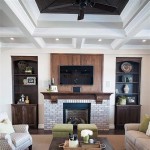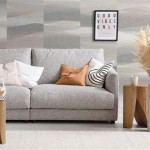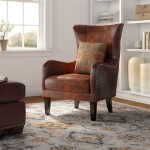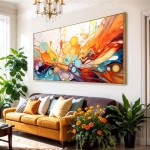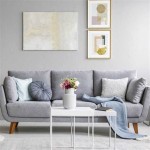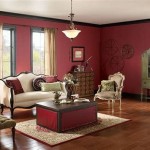Pictures of Rugs in Living Rooms: A Visual Guide to Interior Harmony
Visual representations of living rooms enhanced by strategically placed rugs offer a wealth of information for homeowners and interior designers alike. Analyzing pictures allows for a deep understanding of how rugs affect the overall aesthetic, spatial perception, and functional comfort of a living space. This article explores the various ways rugs are utilized in living room settings, focusing on the visual impact as evidenced by photographic examples. The aim is to distill key principles of rug selection and placement based on observed patterns and trends.
The power of a rug in a living room setting should not be underestimated. Beyond mere floor covering, it serves as an anchor, a unifier, and a definer of space. Carefully chosen and positioned, a rug can subtly influence the mood, the perceived dimensions, and the overall style of the room. By observing images of diverse living room arrangements, one can discern how various rug styles, sizes, colors, and patterns interact with furniture, lighting, and architectural elements.
Rugs as Anchors: Establishing Visual Grounding
One of the primary functions of a rug in a living room is to anchor the furniture arrangement. Pictures frequently showcase rugs placed beneath key pieces, such as sofas, coffee tables, and armchairs, creating a cohesive and grounded seating area. This technique is particularly effective in large living rooms, where furniture can easily feel adrift without a visual anchor. The rug acts as a central point, pulling the individual elements together and establishing a sense of unity.
When observing photographs, pay close attention to how the rug's size relates to the furniture grouping. A common mistake is selecting a rug that is too small, leaving the furniture appearing disconnected. Ideally, the front legs of the sofa and chairs should rest on the rug, defining the seating area and creating a visual connection between the pieces. In smaller living rooms, it may be sufficient for only the front legs to be on the rug, while in larger spaces, it is often preferable to have all legs of the furniture resting comfortably on the rug.
The shape of the rug also plays a significant role in anchoring the space. Rectangular rugs are the most common choice and work well with traditional and contemporary furniture arrangements. Round rugs can soften the sharp angles of furniture and architectural features, making them suitable for adding a touch of visual interest and warmth. Oval rugs can be used to complement curved sofas or to create a more fluid and organic feel.
Furthermore, the pattern and color of the rug contribute to its anchoring effect. A rug with a bold pattern or a rich color can draw the eye and establish a focal point in the room. Conversely, a rug with a subtle pattern or a neutral color can provide a more understated anchor, allowing other elements in the room to take center stage. The key is to choose a rug that complements the existing décor and enhances the overall visual balance.
Rugs as Unifiers: Connecting Disparate Elements
A well-chosen rug can act as a unifying force, tying together different elements of a living room into a cohesive whole. This is particularly important in rooms that incorporate a variety of colors, textures, and styles. Pictures often demonstrate how a rug can bridge the gap between contrasting design choices, creating a harmonious and visually appealing space.
Consider a living room with a mix of modern and traditional furniture. A rug with a transitional design, incorporating elements of both styles, can seamlessly blend these disparate pieces. Similarly, a rug with a color palette that incorporates hues from various pieces of furniture, artwork, and accessories can create a sense of visual harmony. Observing images where rugs achieve this unifying effect offers valuable insights into the power of color coordination and pattern integration.
The texture of the rug also plays a crucial role in unification. A plush, high-pile rug can add warmth and softness to a room with hard surfaces, such as tile or hardwood flooring. Conversely, a flatweave rug can provide a crisp and clean contrast to a room with more textured elements, such as velvet upholstery or wooden paneling. The key is to select a rug texture that complements the existing textures in the room and creates a balanced and inviting atmosphere.
Moreover, rugs can visually connect different zones within a large living room. For instance, a rug can define a seating area, a reading nook, or a play area, creating distinct spaces within the larger room. By using rugs with similar colors or patterns in different zones, one can create a sense of continuity and visual flow throughout the space. Pictures showcasing this zoning technique highlight the practical and aesthetic benefits of using rugs to organize and define different areas within a living room.
Rugs as Definers: Creating Spatial Perception
Rugs have a significant impact on the perceived size and shape of a living room. Pictures showcase how careful rug selection and placement can visually expand a small room or create a sense of intimacy in a large space. Understanding these principles is essential for maximizing the potential of any living room, regardless of its dimensions.
In smaller living rooms, lighter-colored rugs can create a sense of spaciousness and airiness. Conversely, darker-colored rugs can make a small room feel more enclosed and cozy. By observing images, one can appreciate the subtle yet powerful effects of color on spatial perception. It's crucial to consider the room's natural light and existing wall color when selecting a rug color to optimize its visual impact.
The pattern of the rug also contributes to the perception of space. Rugs with vertical stripes can visually lengthen a room, while rugs with horizontal stripes can visually widen it. Geometric patterns can add depth and dimension to a room, while abstract patterns can create a sense of movement and energy. Analyzing pictures allows one to understand how different patterns can be used to manipulate the perceived dimensions of a living room.
Furthermore, the way a rug is placed in relation to the furniture can affect the perceived size of the room. Placing a rug entirely under all the furniture in a small living room can make the space feel more unified and expansive. Conversely, placing a smaller rug only under the coffee table can make the room feel more fragmented and smaller. By experimenting with different rug placements, one can visually optimize the space and create a more balanced and harmonious living room.
In conclusion, pictures of rugs in living rooms provide invaluable insights into the art of interior design. By carefully observing how rugs are used to anchor furniture, unify disparate elements, and define spatial perception, one can develop a deeper understanding of their transformative power. Rug selection and placement are not merely aesthetic choices; they are powerful tools for creating a harmonious, functional, and visually appealing living space.

Living Room Rugs Shop Area For Boutique

Sixhome 9 X12 Area Rugs For Living Room Washable Large Carpet Bedroom Dining Moroccan Boho Foldable Nonslip Indoor Rug Neutral Blue

New Rug Ideas For My Living Room A Stroll Thru Life

How To Choose The Best Rugs For Living Rooms A Advanced Rug Care

26 Living Room Rug Ideas Of 2025

15 Best Living Room Rugs In 2024

The Best Blue And White Area Rugs Thistlewood Farm

A Guide To Living Room Area Rugs Finding The Right Size Style Shabbyfufu Com

How To Use Rugs When Staging A Home Virtually Properties

Large Luxury Rugs The Key To Transforming Grand Interiors Tufenkian

